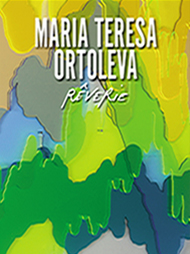
L’approccio con cui Maria Teresa Ortoleva si accosta al tema dell’immaginazione e del sogno
è in prima battuta teso alla schematizzazione, per poi liberare
sfumature di signi¬ficato e suggestioni estetiche. Come in un esercizio di
apparente riduzionismo, l’artista riconduce il sogno e l’attività immaginativa
alla loro componente più tangibile: impulsi cerebrali trascrivibili e misurabili
grazie a dei tracciati. […] La scelta del mezzo e del modo espressivo, poi,
porta de¬finitivamente nel campo dell’estetica: i diversi colori che caratterizzano
i singoli tracciati, la trasparenza del plexiglass e dunque l’interazione
con la luce, il raggruppamento e la disposizione aerea e fluttuante degli elementi
sbilanciano l’equilibrio tra razionalità e istinto a favore della componente
più personale e irriducibile dell’immaginazione e del sogno.
Maria Teresa Ortoleva’s approach to the theme of imagination and dream
has, in the first instance, a diagrammatic intent, moving then to unravel
nuances of meaning and aesthetic suggestions. As in an exercise of only seeming
reductionism, the artist leads dream and imaginative activity back
to their most tangible component: brain impulses that can be transcribed
and measured thanks to their tracks. […] The choice of media and language,
furthermore, de¬finitely takes us into the ¬ field of aesthetics. The different colours
of each single track, the transparency of the acrylic glass and thus the
play with light, their grouping and their aerial and floating layout throw off
the balance between rationality and instinct, highlighting the more personal
and irreducible side of imagination and dream.
Stefano Castelli